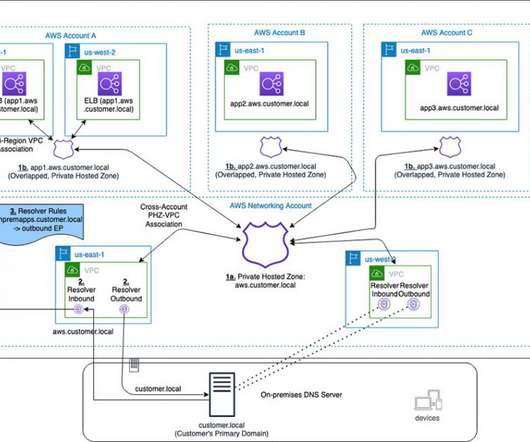Disaster Recovery Solutions with AWS-Managed Services, Part 3: Multi-Site Active/Passive
AWS Disaster Recovery
MARCH 10, 2023
Welcome to the third post of a multi-part series that addresses disaster recovery (DR) strategies with the use of AWS-managed services to align with customer requirements of performance, cost, and compliance. You would just need to create the records and specify failover for the routing policy.










Let's personalize your content